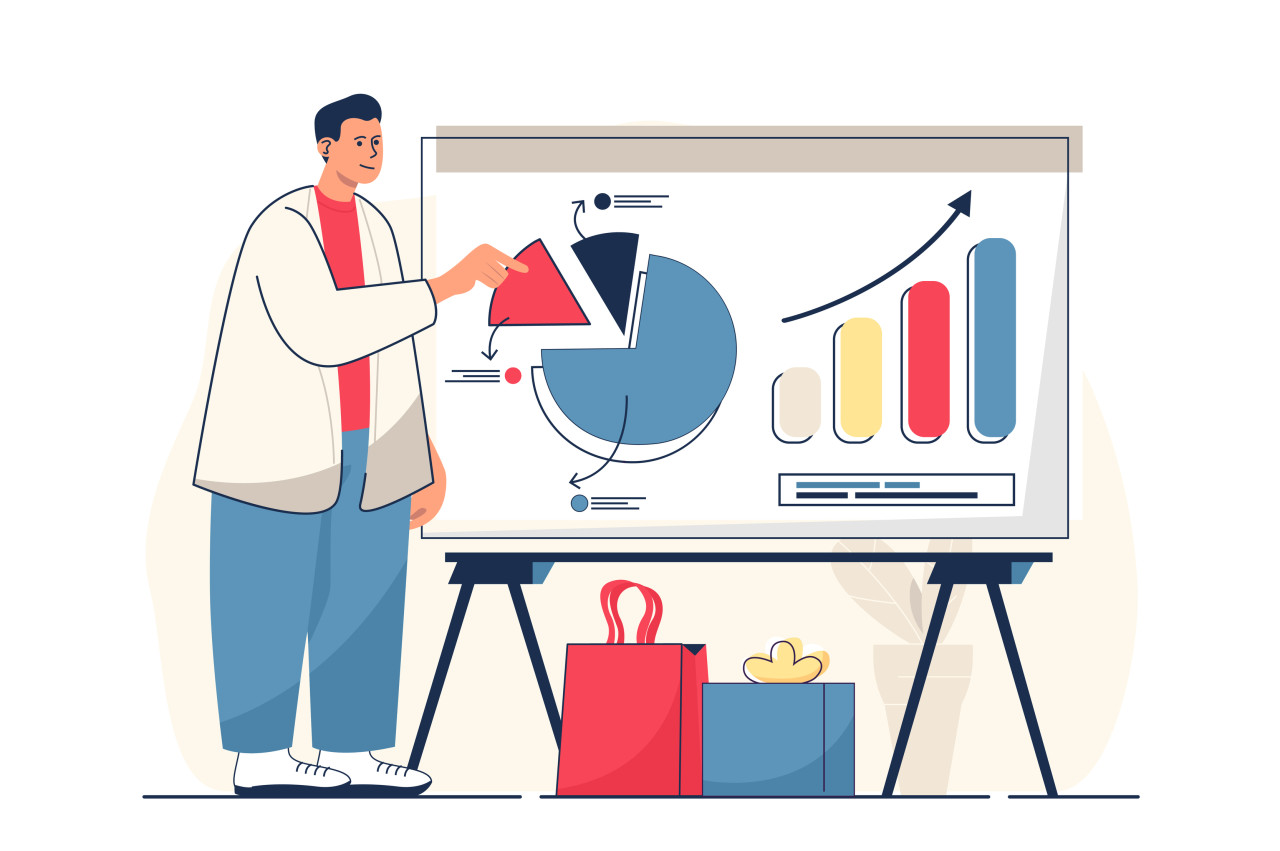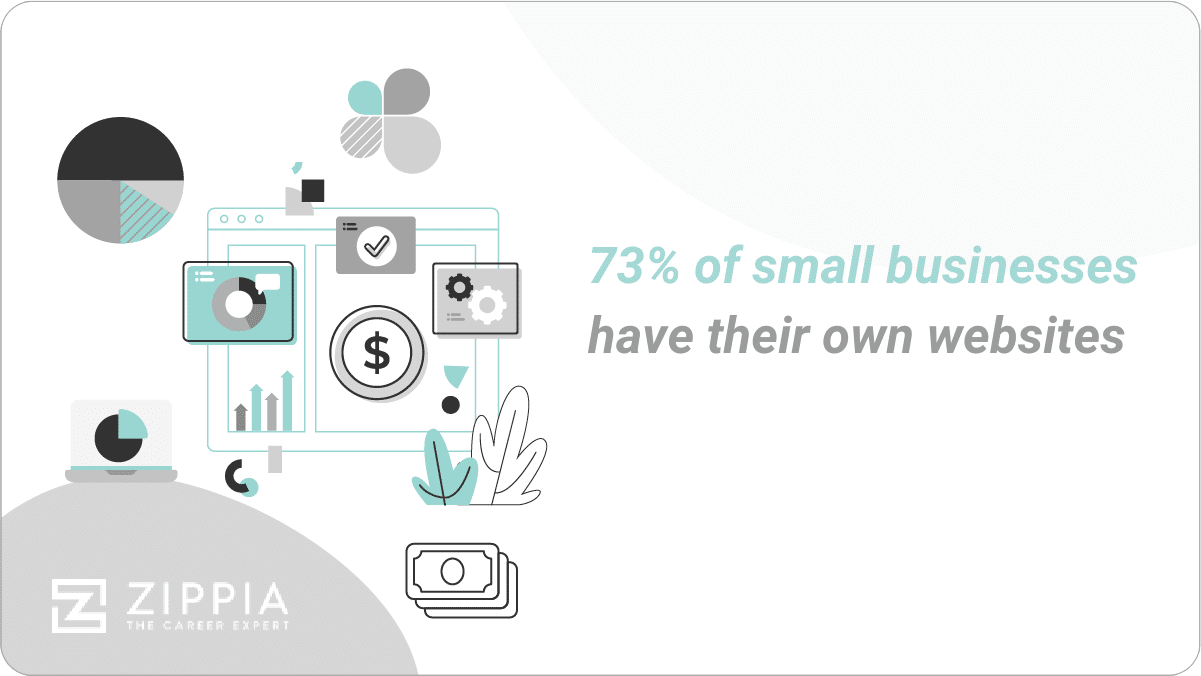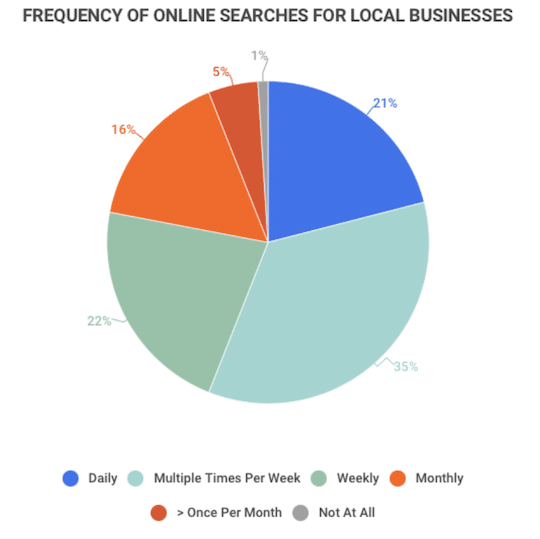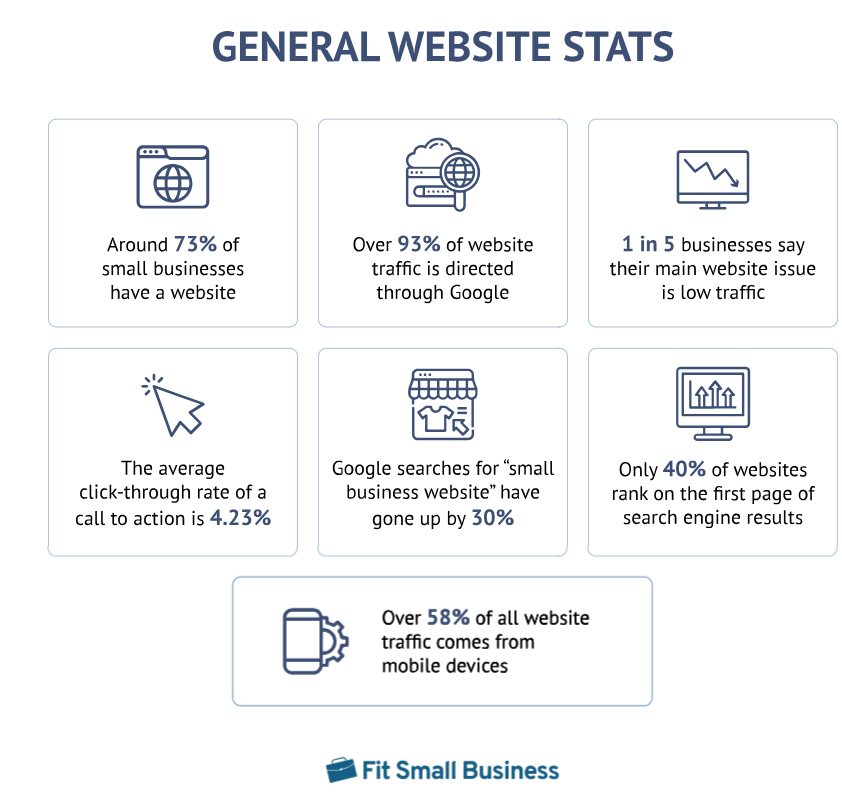Statistics of small businesses on the Internet from 2023 (From the point of consumers and service providers)
By harnessing the power of the web, small businesses can compete more effectively, reaching out to a broader customer base, building brand loyalty, and adapting quickly to market changes and consumer preferences. The digital landscape offers numerous tools and platforms to enhance visibility, engage with customers, and grow your business effectively.
Having a robust online presence is vital for small and local businesses for several key reasons:
- Increased Visibility: Online platforms expand your reach, allowing more customers to discover your business. By being present on the web, you open up to a larger audience, transcending geographical boundaries.
- Improved Credibility: A professional website or active social media profile can significantly boost your business's credibility. About 84% of consumers believe that having a website makes your business more credible.
- Greater Customer Engagement: The web offers unique opportunities for engaging with your audience. Whether it's through social media, blogs, or your website, you can interact directly with customers, fostering stronger relationships and better understanding their needs.
- Effortless Marketing: Online marketing can be more cost-effective and far-reaching compared to traditional methods. It enables you to promote your products and services continuously, even outside of business hours, thus making your business accessible at all times.
- Insightful Feedback and Adaptation: Digital tools provide valuable insights into customer behavior and preferences. Tracking the performance of your online content can help you understand what works and refine your strategies accordingly.
- SEO and Local Discovery: Through effective search engine optimization (SEO), your business can appear in more online searches, particularly in local searches. This is crucial as a high percentage of searches for local businesses result in calls or visits within 24 hours.
- Building a Community: Social media platforms offer a way to build a community around your brand. Engaging with customers, sharing content, and participating in online conversations strengthens your brand's presence and fosters loyalty.
- Cost-Effectiveness: Digital marketing often comes with lower costs than traditional advertising methods. It allows for targeted advertising and the ability to measure the effectiveness of your campaigns in real time.
General statistics
Research Summary. As more and more customers are coming online to order food, buy essentials, and look for the perfect custom birthday present, small businesses also need to go online to stay competitive. When it comes to the number of small businesses that have websites, our research shows that:
- 73% of small businesses have their own website.
- 96% of potential clients learn about a business online
- 81% of shoppers choose to research a business online before making a purchase, with 55% searching for online reviews and 47% searching for the business' website.
- 86% of customers search Google Maps before visiting a business
- The average cost of a website for a small business is anywhere between $1,000 and $10,000.
- Roughly 99% of consumers use the internet to discover and find local businesses.
- 44% of B2B buyers will abandon a small business website with no contact information.
- 62% of customers will ignore a business without a web presence
- 38.5% of users judge a business by how its website looks at first glance
- 82% of consumers read online reviews for local businesses.
STATISTICS ON SMALL BUSINESSES WITHOUT WEBSITES
While many small businesses have adopted websites, a considerable amount still don't use them. Considering how many people rely on the internet in 2021, this can negatively affect a business. Here are the facts:
- At least 27% of small businesses don't have a website.However, 23.5% of small business owners plan to create a website in the near future. The lack of websites among small businesses is because of how expensive it can be to create a new website. Many businesses worry that if website traffic is low, they will be unable to make their money back.
- 40% of small businesses don't want a website. And a further 28% say they likely won't want one in the future. The main reasons cited for this lack of interest are that: their business is too small, they can use social media instead, or that a website is too expensive to be worth it.
- Over 20% of small businesses use Social Media in place of a website.That means 1 in 5 small businesses rely on social media for their online traffic. While the clear benefit of social media is that it's free, it also limits lead generation, diminishes branding, and lacks credibility.
- 27% of small businesses believe a website isn't relevant to their industry.While a further 26% don't like the cost associated with a website, and 15% simply feel they lack the technical knowledge to create or operate a website themselves.
SMALL BUSINESS WEBSITE USER STATISTICS
For obvious reasons, how a user feels about your website can significantly impact how effective the website is. After all, customers won't learn anything about your business if they can't figure out how to navigate the site. When it comes to website users, our research shows that:
- 38.5% of website visitors form their opinion of a business based on initial user experience.First impressions are everything, and that's especially true for over a third of website users. For these individuals, the poor design drives them away from using a small business' website.
- A considerable 76% of buyers are willing to share their personal information in exchange for a white paper.Meaning that this is the kind of content many users are interested in. 79% of B2B buyers agree that white papers were the type of content they'd be most eager to share with their coworkers.
- 38% of customers will stop engaging with a site if it doesn't have an appealing layout.In part, this is due to the sheer amount of choice consumers have on the internet. If they don't like one site, they can easily turn to another. For this reason, the cosmetics of a website can be just as important as the actual information or products.
- Almost 40% of users will disengage from a slow website.Slow websites are such a huge problem that conversions will drop 20% per second of site load time! Most users expect no more than 2 seconds of load time, which means it's vital to keep your website running quickly and smoothly.
- Users spend 88% more time browsing web pages with video content.More than any other feature, users will spend the most time on web pages with video content. That means that quality videos about your brand, products, or other relevant topics will keep users on your website.
Statistic from https://www.zippia.com
SMALL BUSINESS WEBSITE AND LOCAL TRAFFIC STATISTICS
A website is meaningless if it doesn't have any traffic. For any small business, it's important to bring website traffic up to offset the initial cost. Here are the facts:
- Roughly 99% of consumers use the internet to discover and find local businesses.Therefore, even if you have a brick-and-mortar shop, your discoverability becomes much higher as 21% of consumers search the internet every day to find local businesses, and 35% do so multiple times per week.
- Around 70% of website traffic starts with Google.That means that Search Engine Optimization (SEO) is crucial for any website, as most customers will find the website through a search engine. After all, SEO is directly connected to search engine search queries, which accounts for 40% of website traffic.
- At least 78% of location-based mobile searches result in an offline purchase.Of which, 18% lead to a purchase within one day. And even more dramatically, 72% of customers who make a local search end up visiting a store within five miles.
- 62% of consumers share online deals with their friends.Even further, 81% prefer to trust the advice of family and friends over businesses. That means your most important form of marketing could be reviews and recommendations.
MOBILE VS. DESKTOP SMALL BUSINESS WEBSITE STATISTICS
Given that 54% of Americans use their smartphones to shop online, it's important to understand the difference between mobile and desktop website visits. Here are some prominent mobile vs. desktop trends, according to our research:
- Consumers have 2X more interactions with brands on mobile than they do on desktop.This holds true for any other form of media as well. Whether it's TV, in-store, or desktop, customers will interact far more with brands on their phones. This highlights the ever-growing importance of apps.
- In the U.S., desktop has a conversion rate of 3.99%, compared to only 1.22% on mobile.And this trend carries over for all forms of online shopping as well, with the average mobile add-to-cart rate being 10.4%, which is less than the 12.9% for desktop. Overall, consumers are more likely to buy products on desktop than on mobile.
- As of 2020, 61% of U.S. website traffic comes from mobile devices.Despite having a smaller conversion rate, most website traffic comes from mobile devices. On the other hand, only 35.7% of visits come from desktops.
General Website Statistics & Insights by Fitsmalbiz
Building brand presence online is essential to any business, and the key to success is building a website that introduces your brand to prospects, educates and serves customers, and helps you gain market share in your industry. If you haven't built one, these basic stats on websites may convince you to do so.
Building brand presence online is essential to any business, and the key to success is building a website that introduces your brand to prospects, educates and serves customers, and helps you gain market share in your industry. If you haven't built one, these basic stats on websites may convince you to do so.
Approximately 73% of small businesses have a websiteNearly three-quarters of small businesses have a website—up from 2018, when only 50% did. If you're one of the 27% that still doesn't have a web presence, take these online business statistics as a sign to build one soon. Having a website is crucial for your business name and brand recognition and, as the small business website statistics below show, it can also help in lead generation and conversion.
Over 93% of website traffic is directed through GoogleWebsite visitor statistics show that over 93% of the world's web traffic goes through Google, and Google search statistics show that there are over 8 billion searches a day on the platform. So it's easy to conclude that virtually every small business should optimize its website to align with best practices for Google's search engine algorithm.
Part of search engine optimization (SEO) is knowing which search engines you need to optimize for. For example, if your business is conducted primarily on Amazon, you'll want to optimize your listings for Amazon's search engine as well as Google.
1 in 5 businesses say their main website issue is low trafficIt doesn't matter how good your product or service is if no one is around to discover it—in fact, 21% of small businesses say their main website issue is low traffic. Beyond your site design and page loading speeds, make sure you also invest in the rest of SEO. Learn what search engine marketing is to lead your target audience to your site.
The average click-through rate of a call to action is 4.23%
A 4.23% click-through rate might not sound good, but it's significantly higher than the 3.17% click-through rate (CTR) for Google ads—and much cheaper too. Spend time developing effective calls to action (CTAs), whether it's by researching buttons (e.g., shape and color), changing your site's copy, or fixing other aspects of your site's design.
Over the past five years, the number of Google searches for "small business website" skyrocketed to an all-time high. The number of searches has gone up by 30% over the past three years alone, indicating an increased interest from small business owners to build a website for their own brands.
Only 40% of websites rank on the first page of search engine resultsFirst-page rankings are everything in the world of SEO. When researching on the internet, whether to find solutions to a problem or just check out new businesses to try, most internet users will only search on the first page. However, according to website traffic statistics, only 40% of websites rank on the first page of search results—which means the majority of sites get very little traffic.
Pro tip: The most effective way to get your website to rank on search engines—including on the first page—is to do search engine optimization, such as keyword research. Learn more about ways to get your website ranking on Google and increase your website traffic rankings.
Over 58% of all website traffic comes from mobile devicesWhen designing your website, it's more important than ever to have a mobile-first mindset. As of the first quarter of 2023, website statistics show that 58.3% of all web traffic comes from mobile devices, a steadily increasing trend over the past five years and a 7% increase from 2020. As smartphones become more capable, people are steadily using them to do more things, from researching information to shopping.
Statistics About Site Design
Now that you know the general website basics that matter when building a site, here are some website statistics on design to keep in mind as you build your site.
38% of people will stop interacting with a poorly designed sitePeople have endless websites to choose from online. Instead of trying to navigate a bad website, 38% will leave and head to the hundreds (if not thousands) of other sites that offer the same things—minus the headache. Don't waste the opportunity to convert your viewers by having them bounce off the page before they've even begun—see what makes a good website as far as design goes.
38.5% of users judge a business by how its website looks at first glanceNearly 39% of professional web developers think poor design drives users away. Forget about optimization for a second, and just think about how your site looks aesthetically. Is it sleek enough? Does it have high-quality images? Designing a site from the ground up isn't the most difficult thing to do. For inspiration, check out our list of the best one-page website examples.
70% of our time is focused on the left side of the webpageDid you ever wonder why many websites (like Amazon) keep their menu bars on the left side? Most people read from left to right, so the majority of our attention is directed on the left side of the page.
Studies show that 70% of the time users spend on a webpage is solely focused on the left. So, always place your most important information nearer to the left side of web pages (and high up on the page) for a better response. Our list of the best startup website examples offers more insights into this as well as other creative web design ideas.
39% of users focus on a website's colorsOne of the most crucial website facts—and branding facts overall—is that color substantially affects how people perceive your brand. More than any other element, including quality images or typography, a website's color scheme is what attracts consumers the most when it comes to website design. In fact, nearly 40% of users focus on color when looking at a website, with 46% of consumers stating they prefer blue on a site's design.
Consistent branding can increase website conversions by 33%Consistent branding across your website and all of your online marketing assets influences purchase decisions in a major way and is essential for brand recognition. Keep your imagery, language, and colors aligned, as consistent branding can increase conversions (and with that revenue) by as much as 33%. See how other companies leverage this tactic in our list of the best small business website examples.
73% of businesses invest in unique designWith the amount of competition in the market, your company website needs to stand out. Nearly three-fourths of businesses achieve this by investing heavily in design. As a startup or small company, you might not have the funds to compete with larger companies, but that doesn't mean you can't build a website that does. In fact, the best cheap website builders make it easy to create a custom, visually impactful website to set your brand apart for less than $9 a month.
57% of users won't recommend a company with poor mobile web designAbove all, don't forget to ensure your site looks good on every device. According to Zippia, 57% of consumers say they wouldn't recommend a business with a poorly designed mobile website. The good news is that drag-and-drop website builders like Squarespace, Wix, and GoDaddy have mobile-friendly templates you can use to design your website.
38% of customers look at a site's layout & navigational links when they first visit a websiteIn website design, layout and navigational links play a crucial role in the overall user experience. They essentially work as maps that guide users around your website and point them in the right direction. It's also the first thing that many users look for when visiting your website: a survey found that 38% of customers look at a website's layout and navigational links when visiting it for the first time.
Website Stats About User Experience (UX)
Excellent design is one thing, but building a website with the site visitor's user experience (UX) in mind is what will truly leave a great impression of your site. To ensure your customers return to your website time and again, take these website statistics on user experience into account.
40% of people will stop engaging with a slow websiteNobody likes a slow website. While it's great to have high-quality images, GIFs, and videos, they unfortunately can slow your website down significantly, and eventually drive audiences away. According to studies, 40% of consumers will leave a website that takes more than three seconds to load. These page load time statistics mean that while having a visually impactful website is always great, if your audience doesn't wait around to see it, it can't do its job.
Conversions drop up to 7% per second of site load timeWhen we say make sure your site loads fast, website load time statistics show it to be a matter of seconds. Each second a website spends loading risks many missed conversions—specifically, up to 7% of conversions are lost for each wasted second. These website performance statistics also increase exponentially: When a page takes 10 seconds to load, users' bounce rate can increase up to 123%.
Slow page speed can negatively impact web traffic, in turn suppressing leads and sales. Use these cheap and free SEO site audit tools to spot potential issues and improve the performance of your website.
Optimal website visual intensity can increase positive response to 5.03%Your website's visual intensity refers to the overall effect its visual elements—including photos, buttons, thumbnails, and more—have on people. Research shows that websites with optimal visual intensity (i.e., good visual hierarchy and a dynamic and engaging layout) have a 5.03% positive response—over 117% more than sites with a basic visual intensity.
Poor UX can cause 50% of users to choose your competitors insteadA poorly designed and optimized website does more than frustrate users. Website statistics prove that it actively drives 50% of potential customers straight into your competitors' arms. That's quite a bit of revenue, considering each shopper spends around $2.30 per visit on average. User experience isn't a one-time thing either: Consistently improve your site's UX, as around 80% of a business' profits come from 20% of existing customers.
80% of consumers will leave a brand after three bad experiencesUsers expect excellent customer service as well as strong web design. Four out of five users are willing to leave a brand they are loyal to after three (or even fewer) bad experiences in customer service. This means more than optimizing for fast load times and easy navigation. Engage website visitors with chatbots or live chat features so their queries get answered instantly. Additionally, provide web forms that prospects and customers can use to request information.
The ROI of spending on UX is 9,900%Research shows that for every $1 spent on UX, a brand gets $100 in return. That's an amazing return on investment (ROI), and just goes to show how important it is to optimize your website with your audience in mind.
43% of small businesses plan to invest in web performanceWebsite speed statistics show that only 43% of small companies know just how important loading speeds are. The average page loading speed is 10.3 seconds for desktops and 27.3 seconds for mobile—an enormous amount of time in today's ultra-fast-paced world.
Statistics About Web Content
These web page statistics on content will help you create the right content that drives traffic to your website, keeps your customers engaged, and gets prospects moving through to the end of the sales funnel.
Users spend 88% more time on web pages with video content
If you're having a hard time lowering your bounce rate, include videos in your content. Studies show that users spend 88% more time on pages with videos. Not only are videos generally more engaging, but users usually prefer watching videos to reading long blocks of text.
87% of marketers have increased sales because of video content
In addition to increasing time on site and engagement, having video content can also generate considerable traffic and sales. More than 85% of marketers have improved their sales specifically because of video content. On the consumer's side, a whopping 89% of customers said that they've been convinced to make a purchase from a company's video.
Businesses that blog get 67% more leads per month
Once you've made a small business website that provides great UX, the next step is to create a blog, as these website stats show. Blogs can generate more leads—nearly 70% more, in fact. Blogging is a fantastic way to personalize and humanize your brand by imparting your brand values to your readers. Plus, it can also help boost SEO by showing search crawlers that your website is authoritative for your business industry.
61% of U.S. consumers made a purchase because of a blog
Research shows that 61% of U.S.-based online consumers made a purchase based on a blog recommendation. In addition to businesses looking for lead generation for direct sales, this is also great news for those who want to start a blog that makes money via affiliate marketing or sponsored content.
Still deciding on which platform to use for your website and blog? Try one of the best blogging platforms, like Wix or HubSpot, and build one today. They are beginner-friendly, offer great design and SEO features, and are affordable, with plans starting for free.
Readers are 94% more likely to read your entire blog if it takes less than 6 minutes
Though having many blog posts is good for your SEO, try to keep the reading time of each just under six minutes (approximately 1,000 words). According to research, this is the sweet spot that lets you optimize blog content and impart useful information, and it gives your blog a 94% better chance of being read from start to finish.
Statistics for Ecommerce Sites
Are you planning to sell online? Whether you're a small local ecommerce business or a dropshipper, these statistics about websites in the ecommerce industry can help you build a successful brand. For even more data on all things ecommerce, check out 38 more ecommerce statistics.
There are over 26 million ecommerce websitesMore and more people are shopping online, with over 26 million ecommerce websites worldwide—of which 14 million are located in the U.S.
The biggest ecommerce platform has 6.1 million live websitesWooCommerce is the largest ecommerce platform as of 2023, with over 6.1 million live ecommerce websites. This makes up almost half of the total ecommerce sites there are worldwide. This is followed by Shopify, with just over 4 million live websites.
While both platforms offer numerous benefits for any business, find out which is better for yours in our WooCommerce vs Shopify comparison.
On average, U.S. ecommerce sales grow by 17.9% each yearDespite massive competition, ecommerce websites are a worthwhile investment according to website statistics. Studies show that U.S. ecommerce sales grow by an average of 17.9% every year. Worldwide, a quarter of the world's population (or roughly 2 billion people) purchased a product or service online in 2021—needless to say, ecommerce is here to stay.
Nearly 54% of U.S. consumers shop on mobile devicesMore reason to have a beautifully designed site on mobile, not just on desktop—nearly 54% of Americans shop on their mobile phones and tablets. While you're at it, make sure to integrate your social media profiles and marketplaces with your website. Think Facebook, Amazon, Etsy, Instagram, and Shopify—make it easy for your customers to hit that "Check Out" button.
86% of mobile shoppers abandon cartsWhile mobile traffic accounts for more than half of all ecommerce web traffic, research shows that mobile also leads to higher abandonment rates. Mobile shoppers abandon carts 86% of the time, compared to desktop shoppers who abandon carts 73.07% on average.
To combat this, ensure that your store is optimized for mobile, not only in images but also in copy. And, don't forget to use website exit pop-ups and email marketing to avoid cart abandonment. Neglecting to optimize these can lead to a loss in revenue.
Sites that only accept PayPal are considered less trustworthyOnly offering PayPal as a payment option on your website makes your site look dated or less reputable, which can be a huge mistake when trying to get customers to convert. While PayPal might be the default payment gateway for many businesses, explore other options like Amazon Pay, Apple Pay, Stripe, and Skrill.
You can also eliminate the headache of integrating payment processors by building your website on Weebly. You'll get access to its reputable payment processing features in every plan, even the free one. This is thanks to integrated payment options through its parent company, Square.
44% of Europeans prefer purchasing via digital walletsCustomer research in Europe found that 44% of shoppers prefer digital wallets as an online payment method—including e-wallets like Apple Pay and Alipay—more than any other method like credit cards or cash on delivery.
Original Text Fit Small Business
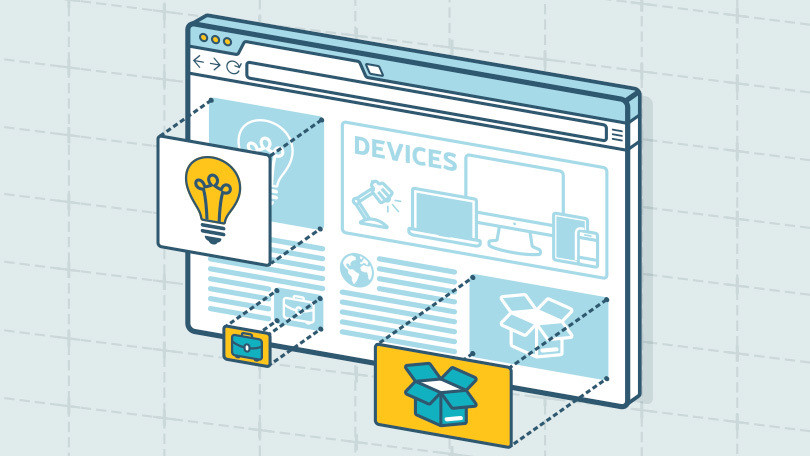
16 reasons why your business needs a website - Blog
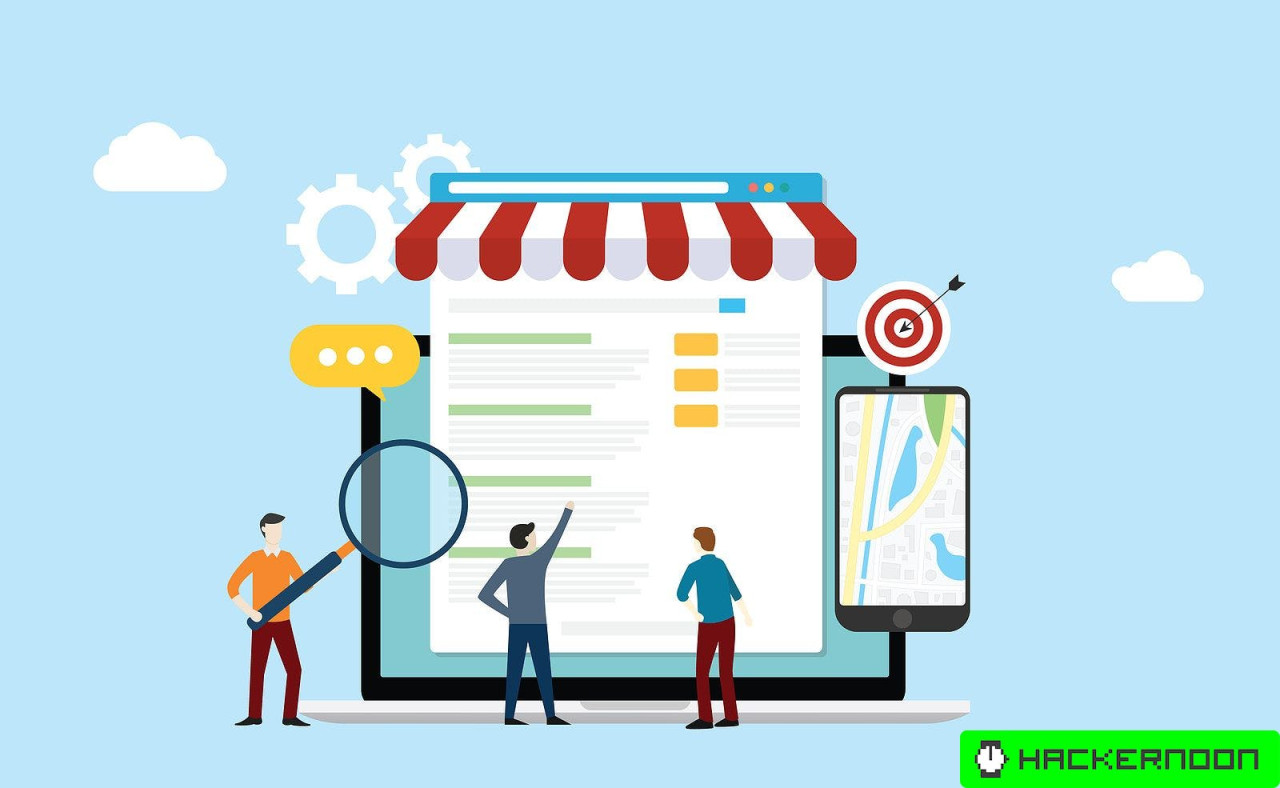
How a small business can benefit from an online presence - Blog

Presentation website for small business: Everything you need to know - Blog
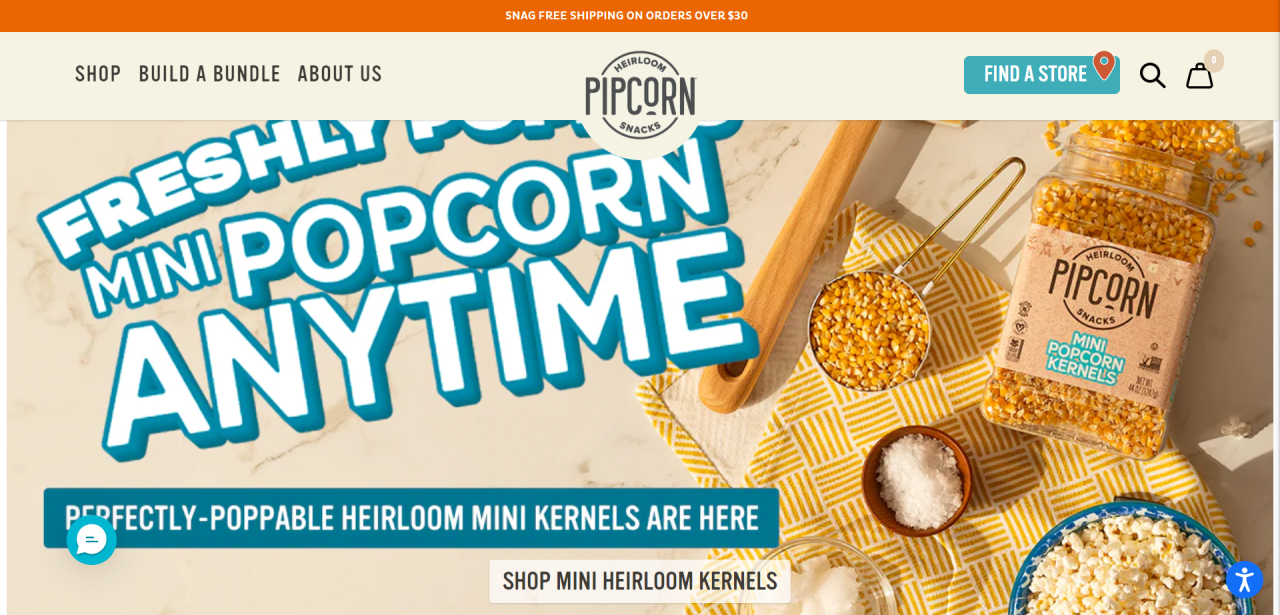
Oberlo: Most inspiring small business web stores in 2024 - Blog
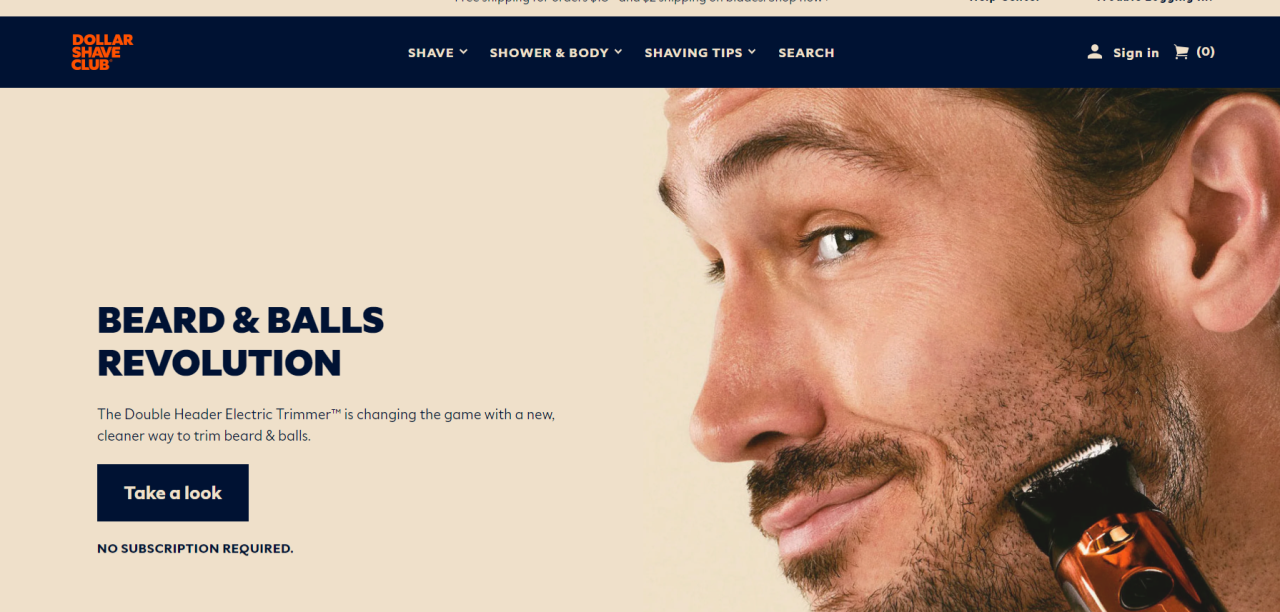
Dollar Shave Club Marketing Success: From Viral Video to Billion-Dollar Company by Optimonk - Blog
When you subscribe to the blog, we will send you an e-mail when there are new updates on the site so you wouldn't miss them.

